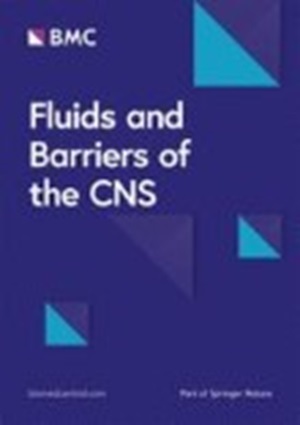通过眼内双光子成像评估缺血性中风对动静脉轴血脑屏障特性的影响分析
IF 5.9
1区 医学
Q1 NEUROSCIENCES
引用次数: 0
摘要
血脑屏障(BBB)的早期破坏以及由此导致的血源性物质外渗进入脑实质是缺血性脑卒中的常见特征。虽然血脑屏障破裂与脑出血风险增加和临床预后不良有关,但这一过程的原因和机制在很大程度上仍不清楚。本研究的目的是建立一种成像和分析方案,以研究 BBB 破损的动态与沿动静脉轴的血流动力学特性的关系。在通过头颅开窗进行光栓诱导缺血性中风后,我们利用纵向体内双光子成像技术研究了脑血管对缺血的反应,包括从早期关键时刻到梗死后几天/几周的反应。我们证明,早在血管闭塞后 30 分钟,就可以在三维空间中以单血管分辨率研究 BBB 的破坏和血流动力学参数,包括紊乱的血流。此外,我们还展示了该方案允许对单个血管随时间变化对缺血的反应进行纵向研究,从而能够检测(不适应的)血管重塑,如血管内嵌、血管萌发和血管网络缠结。总之,这种活体双光子成像和分析方案将有助于今后研究 BBB 破损对疾病进展的分子和细胞机制以及空间贡献,最终有助于开发新的、更精确的缺血性中风治疗策略。本文章由计算机程序翻译,如有差异,请以英文原文为准。
Analysis of ischemic stroke-mediated effects on blood–brain barrier properties along the arteriovenous axis assessed by intravital two-photon imaging
Early breach of the blood–brain barrier (BBB) and consequently extravasation of blood-borne substances into the brain parenchyma is a common hallmark of ischemic stroke. Although BBB breakdown is associated with an increased risk of cerebral hemorrhage and poor clinical prognosis, the cause and mechanism of this process are largely unknown. The aim of this study was to establish an imaging and analysis protocol which enables investigation of the dynamics of BBB breach in relation to hemodynamic properties along the arteriovenous axis. Using longitudinal intravital two-photon imaging following photothrombotic induction of ischemic stroke through a cranial window, we were able to study the response of the cerebral vasculature to ischemia, from the early critical hours to the days/weeks after the infarct. We demonstrate that disruption of the BBB and hemodynamic parameters, including perturbed blood flow, can be studied at single-vessel resolution in the three-dimensional space as early as 30 min after vessel occlusion. Further, we show that this protocol permits longitudinal studies on the response of individual blood vessels to ischemia over time, thus enabling detection of (maladaptive) vascular remodeling such as intussusception, angiogenic sprouting and entanglement of vessel networks. Taken together, this in vivo two-photon imaging and analysis protocol will be useful in future studies investigating the molecular and cellular mechanisms, and the spatial contribution, of BBB breach to disease progression which might ultimately aid the development of new and more precise treatment strategies for ischemic stroke.
求助全文
通过发布文献求助,成功后即可免费获取论文全文。
去求助
来源期刊

Fluids and Barriers of the CNS
Neuroscience-Developmental Neuroscience
CiteScore
10.70
自引率
8.20%
发文量
94
审稿时长
14 weeks
期刊介绍:
"Fluids and Barriers of the CNS" is a scholarly open access journal that specializes in the intricate world of the central nervous system's fluids and barriers, which are pivotal for the health and well-being of the human body. This journal is a peer-reviewed platform that welcomes research manuscripts exploring the full spectrum of CNS fluids and barriers, with a particular focus on their roles in both health and disease.
At the heart of this journal's interest is the cerebrospinal fluid (CSF), a vital fluid that circulates within the brain and spinal cord, playing a multifaceted role in the normal functioning of the brain and in various neurological conditions. The journal delves into the composition, circulation, and absorption of CSF, as well as its relationship with the parenchymal interstitial fluid and the neurovascular unit at the blood-brain barrier (BBB).
 求助内容:
求助内容: 应助结果提醒方式:
应助结果提醒方式:


